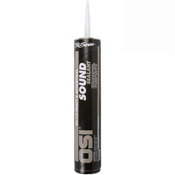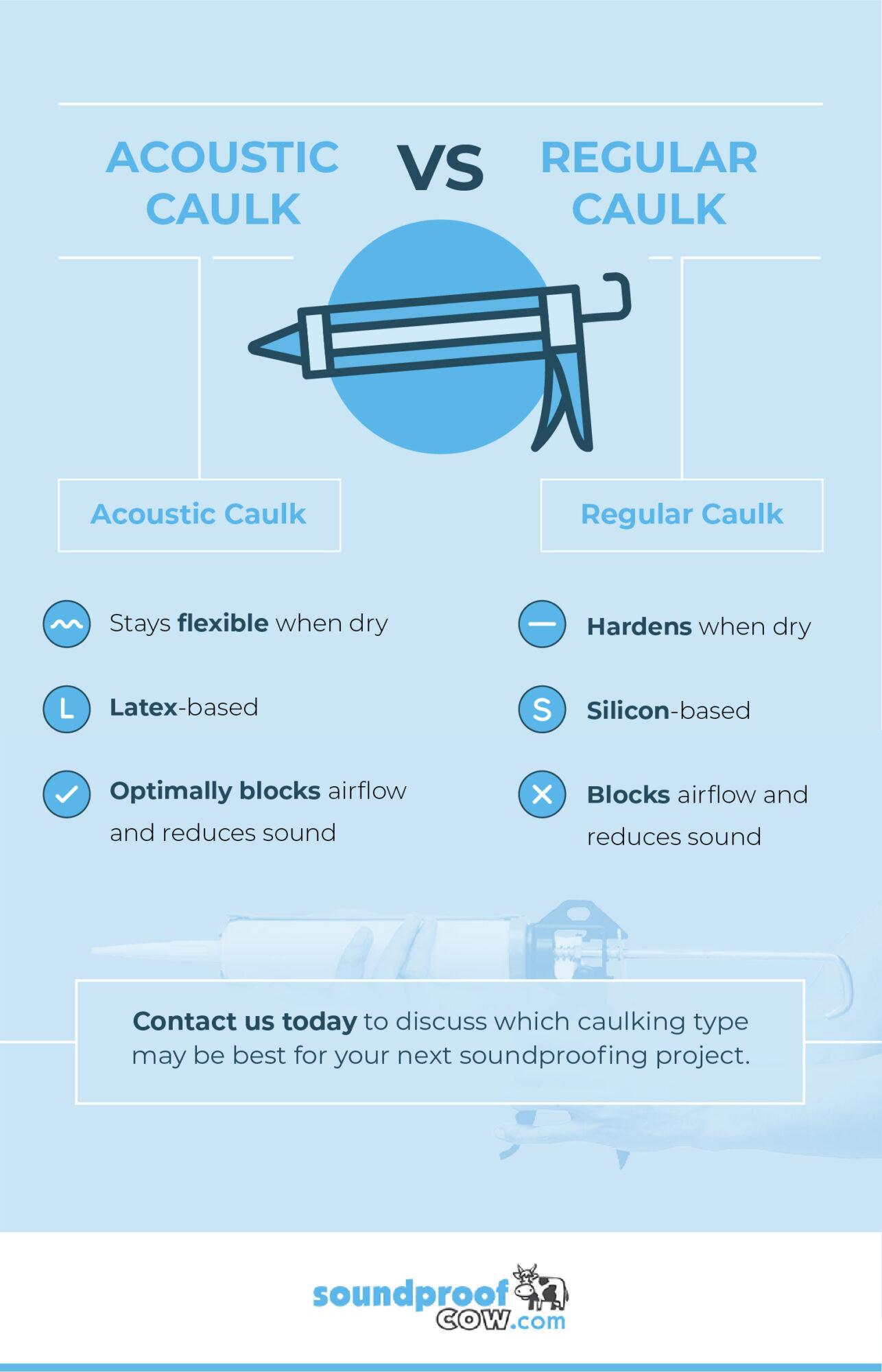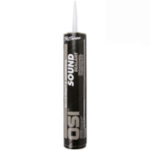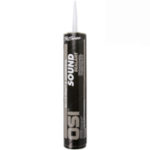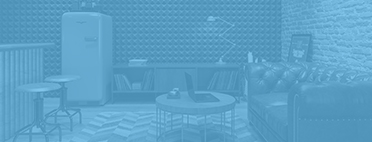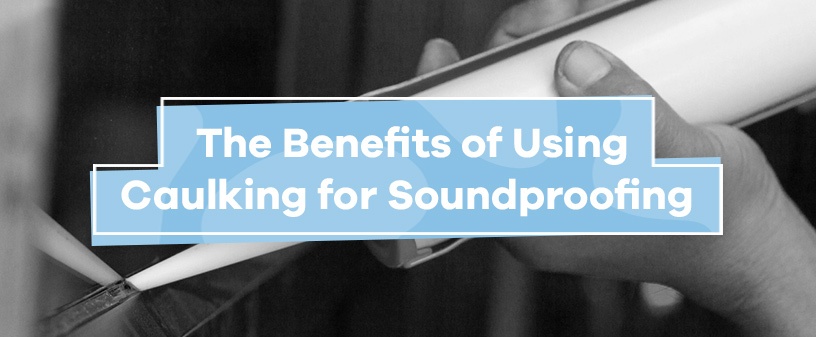
Table of Contents:
What is Acoustic Caulk
Why Get Soundproofing Caulk
Acoustic vs Regular Caulk
There are many ways to soundproof a room, and the way you choose will be largely dependent upon what kind of room or facility you are trying to soundproof. Soundproof Cow can help you with any type of soundproofing you choose, of course, but one quick and easy way to start is with acoustic caulking.
If you are finding that unwanted sound is getting into your bedroom while you are trying to sleep or watch TV, caulking may be a great solution.
What is Acoustic Caulk?
Acoustic caulk is commonly used to seal gaps between walls, floors or ceilings to help prevent sound transmissions.
Why Should I Get Soundproofing Caulk?
Sound travels through the air, which means if you’re experiencing a greater level of sound coming into a room, there’s a good chance it’s because a greater than necessary amount of air is flowing into the room. If you have ever thought about insulating your home, you understand how air can flow through gaps in walls, under doors and around windows.
Caulking can solve this problem, creating a tight seal around these gaps that air, and subsequently, sound, cannot travel through. You can reduce sound coming into your home by up to 15 percent by caulking around outlet boxes, in drywall cracks and in floorboard cracks. You could also install weatherstripping under doors and along the edges of windows. Storm windows can also be great at reducing sound. Before you start, it’s important to note that all caulk is not the same. If you are looking for the best caulk for soundproofing, it is imperative that you use acoustic caulk rather than standard caulk.
Differences Between Acoustic Caulk and Regular Caulk
While regular caulk can certainly block airflow and reduce sound, you should be aware that there is sound caulk that can provide you with much better results.
The reason for this is that soundproof caulk is much more flexible than silicone caulk, which hardens as it dries. This means you will not experience shrinkage with soundproof caulk, which can lead to cracks and defeat the purpose of caulking for soundproofing purposes. Soundproof caulk is a rubbery caulk that is non-flammable, usually latex-based instead of silicone-based and will not harden. This means it can serve for years as an effective sound blocker.
Acoustic caulk adheres tightly wherever you apply it and does not move or change shape once applied. While it may not prevent all sound from getting through, it is a very cost-effective way to reduce sound.
Where to Find the Best Acoustic Caulk
Naturally, if you’re looking to purchase a sealant for soundproofing purposes, the place to go is Soundproof Cow! The best acoustic sealant is OSI® Pro-Series SC-175 Acoustical Sound Sealant. You can order from us by the tube or in cases of 12 right now. This is a water-based sealant for use on both exposed and unexposed walls that is VOC-compliant, non-flammable, easy to clean and apply and highly adhesive. It’s a great way to get started with soundproofing. For more soundproofing products and ideas, contact the Soundproof Cow team today.



